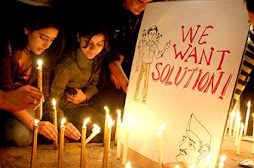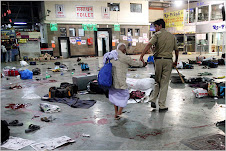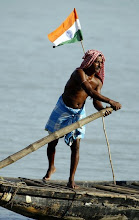REPORT OF THE COUNCIL ON FOREIGN RELATIONS
Iran's leaders have worked to pursue nuclear energy technology since the 1950s, spurred by the launch of U.S. President Dwight D. Eisenhower's Atoms for Peace program. It made steady progress, with Western help, through the early 1970s. But concern over Iranian intentions followed by the upheaval of the Islamic Revolution in 1979 effectively ended outside assistance. Iran was known to be reviving its civilian nuclear programs during the 1990s, but revelations in 2002 and 2003 of clandestine research into fuel enrichment and conversion raised international concern that Iran's ambitions had metastasized beyond peaceful intent. Iran has consistently denied allegations it seeks to develop a bomb. Yet many in the international community remain skeptical. Despite a U.S. intelligence finding in November 2007 that concluded Iran halted its nuclear weapons program in 2003, the Bush administration warned that Iran sought to weaponize its nuclear program, concerns the Obama administration shares. Nonproliferation experts note Iran's ability to produce enriched uranium continues to progress but disagree on how close Iran is to mastering capabilities to weaponize. But the September 2009 revelation of a second uranium enrichment facility near the holy city of Qom--constructed under the radar of international inspectors--deepened suspicion surrounding Iran's nuclear ambitions.
Atoms from America
Iran's efforts to develop nuclear energy trace to 1957, in connection with a push from the Eisenhower administration to increase its military, economic, and civilian assistance to Iran. On March 5 of that year, the two countries announced a "proposed agreement for cooperation in research in the peaceful uses of atomic energy" under the auspices of Eisenhower's Atoms for Peace program. The deal was intended to open doors for U.S. investment in Iran's civilian nuclear industries, such as health care and medicine. The plan also called for the U.S. Atomic Energy Commission to lease Iran up to 13.2 pounds of low-enriched uranium (LEU) for research purposes. Two years after the agreement was made public, Shah Mohammed Reza Pahlavi ordered the establishment of an institute at Tehran University--the Tehran Nuclear Research Center--and negotiated with the United States to supply a five-megawatt reactor. Over the next decade the United States provided nuclear fuel and equipment that Iran used to start up its research. Gary Samore, President Obama's top expert on weapons of mass destruction, told CFR.org in 2008 that the cooperation was meant to assist Iran in developing nuclear energy while steering Tehran away from indigenous fuel-cycle research. On July 1, 1968, Iran signed the Nuclear Nonproliferation Treaty (NPT) on the day it opened for signature. Six years later Iran completed its Safeguards Agreement with the International Atomic Energy Agency (IAEA).
By the 1970s, France and Germany joined the United States in providing assistance to the Iranian nuclear program. Regional wars and predictions of a looming energy shortfall prompted the shah to explore alternative forms of power production. In March 1974, he established the Atomic Energy Organization of Iran, and announced plans to "get, as soon as possible, 23,000 megawatts [of electricity] from nuclear power stations." By the mid-1970s, Iran had signed contracts with Western firms--including France's Framatome and Germany's Kraftwerk Union--for the construction of nuclear plants and supply of nuclear fuel.
Second Thoughts on a Nuclear Iran
Despite the early and sustained flow of nuclear technology to Tehran, Western governmental support for Iran's nuclear program began to erode ahead of the Islamic Revolution of 1979. In August 1974, a U.S. special national intelligence estimate (PDF) declared that while "Iran's much publicized nuclear power intentions are entirely in the planning stage," the ambitions of the shah could lead Iran to pursue nuclear weapons, especially in the shadow of India's successful nuclear test in May 1974.
"If Iran is willing to enter into serious negotiations, then they will find a willing participant in the United States and the other [partner] countries." - P.J. Crowley, U.S. State Department spokesman
This concern led Western governments to withdraw support for Iran's nuclear program. Pressure on France, which in 1973 signed a deal to build two reactors atDarkhovin, and Germany, whose Kraftwerk Union began building a pair of reactors at Bushehr in 1975, led to the cancellation of both projects. After the Islamic Revolution, the seizure of U.S. hostages, and termination of diplomatic relations in 1979, U.S. opposition to Iran's nuclear efforts increased during the 1980s and 1990s. Washington blocked nuclear deals between Iran and Argentina, China, and Russia. Mohammad Javad Zarif, the former Iranian ambassador to the United Nations, wrote in Columbia University's Journal of International Affairs in 2007 that Washington's shift away from supporting Iran's nuclear energy program left Tehran with little choice but to be discreet in its nuclear activities (PDF). "To avoid the [U.S.-led] restrictions and impediments," Zarif writes, "Iran refrained for disclosing the details of its programs."
Known Capabilities
The withdrawal of Western support after the Islamic Revolution slowed Iran's nuclear progress. And a confluence of factors--opposition to nuclear technology by Ayatollah Ruhollah Khomeini, the exodus of nuclear scientists, and the destruction of Iraq's nuclear facility by Israel in 1981, which removed an immediate threat--sent Iran's nuclear program into a tailspin. But many nonproliferation experts believe Iran became interested again in a nuclear program by the mid-1980s. Leonard S. Spector, deputy director of the Center for Nonproliferation Studies, writes there is evidence Iran received assistance from Pakistani nuclear scientist AQ Khanas early as 1985, though it wasn't until the death of Khomeini in 1989 that Tehran's efforts reached critical mass. [Khan, speaking to a Pakistani television journalist in August 2009, confirmed that his network assisted Iran (PDF) in contacting suppliers of nuclear technology].
Unlike his predecessor, Ayatollah Ali Khamenei held a more favorable view of nuclear energy and military technology, and set out to rebuild Tehran's program. Analysts also believe the discovery of Iraq's clandestine nuclear weapons program during the 1991 Gulf War, as well as a growing U.S. presence in the region, pushed Tehran to ramp up its research. In a boost to the civilian nuclear effort, Russia in January 1995 picked up where Germany left off, signing a contract with Iran to complete two 950-megawatt light-water reactors at Bushehr (with fuel supplied by Russia). In September 2008, the Russian company building the power plantreiterated its commitment (AFP) to finishing the project, while Moscow has said it hopes to fire up the reactor by the end of 2009 (Press TV). Iranian officials have also announced that the Darkhovin project has resumed, and plans call for a 360-megawatt reactor to be operational there by 2016. Iran--which has also turned to China, Pakistan, and North Korea for nuclear technology and assistance--claims it wants to build nuclear power plants to diversify its energy portfolio.
With an eye toward fueling these facilities with domestically produced fuel--and, many experts say, to develop a weapon--Iran has built a vast network (PDF) of uranium mines, enrichment plants, conversion sites, and research reactors. Of these facilities, about a dozen are considered major nuclear sites (PDF). For instance, the Isfahan Nuclear Technology Center employs as many as three thousand scientists and is suspected of housing Iran's weapons program, according to the U.S.-funded nonpartisan Congressional Research Service. Isfahan is also the location of Iran's uranium-conversion efforts, where approximately 366 tons of uranium hexafluoride has been produced since March 2004. This so-called feedstock is fed into centrifuges at another central site: the Natanz enrichment facility.
At Natanz, first-generation centrifuges (IR-1) purchased from Pakistan spin uranium hexafluoride at great speeds to increase the percentage of uranium-235, the principle ingredient for both power production and weapons capability. Natural uranium contains 0.7 percent of the uranium-235 isotope, and generally, light-water power reactors require enrichment levels of 3 percent to 5 percent (levels of low-enriched uranium, or LEU). Weapons-grade uranium--also known as highly-enriched uranium, or HEU--is around 90 percent (technically, HEU is any concentration over 20 percent, but weapons-grade levels are described as being in excess of 90 percent). According to the IAEA, Iran is capable of enriching to about 4.7 percent. David Albright, an expert on Iran's nuclear program and president of the Institute for Science and International Security, estimates Iran is producing roughly 2.77 kg of LEU per day (PDF), a rate that has remained consistent throughout 2009. Mark Fitzpatrick, senior fellow for nonproliferation at the International Institute for Strategic Studies in London, says if Iran were to stockpile sufficient LEU they would be able to produce 25 kg of weapons-grade uranium for production of a single bomb "within a couple of months," a timeline Albright agreed with during a February 2009 interview with CFR.org. Iran is using centrifuges to enrich uranium hexafluoride gas, increasing the concentration of uranium-235. Senior American officials, speaking on background, told reporters in September 2009 that a second enrichment facility under construction near Qom could holdabout 3,000 centrifuge machines. "Now, that's not a large enough number to make any sense from a commercial standpoint," the official said. "But if you want to use the facility in order to produce a small amount of weapons-grade uranium, enough for a bomb or two a year, it's the right size."
Unanswered Questions
International skepticism of Iranian intentions was first aroused in August 2002 when a London-based Iranian opposition group disclosed details about a secret heavy-water production plant at Arak, as well as the underground enrichment facility at Natanz. In May 2003, State Department spokesman Richard Boucher said the disclosure of Arak and Natanz raised serious questions about Iran's nuclear intentions. "We believe Iran's true intent is to develop the capability to produce fissile material for nuclear weapons," Boucher said, "using both the plutonium route (supported ultimately by a heavy-water research reactor) and the highly enriched uranium route (supported by a gas centrifuge enrichment plant)." These revelations, coupled with subsequent admissions from Iran that it has concealed aspects of its program, prompted the IAEA to intensify inspections.
"Iran has not cooperated with the Agency in connection with the remaining issues ... which need to be clarified in order to exclude the possibility of there being military dimensions to Iran´s nuclear program." -- IAEA Director General Mohamed ElBaradei
While international inspectors have never found concrete evidence linking Iran's nuclear program to weapons development, Iran's concealment of its program--like the partially constructed enrichment facility near Qom, which Western officials say was under construction for years before Iran's disclosure in the fall of 2009--has fed concerns. In a June 2003 report (PDF), IAEA inspectors concluded that Iran had failed to meet obligations under its Safeguards Agreement signed in 1974. Failures included withholding construction and design details of new facilities, and not reporting processed and imported uranium. Some undeclared shipments dated to 1991, the IAEA said. International pressure following the revelations led Iran to temporarily cease its enrichment-related activities, and in late 2003 Tehran signed an Additional Protocol allowing the atomic agency greater access to nuclear sites. Negotiations with members of the European Union quickly followed (PDF). But on August 8, 2005, Iran announced it was resuming uranium conversion at Isfahan. By early 2006, IAEA inspectors confirmed that Iran had once again resumed its enrichment program. Today Iran operates thousands of IR-1 centrifuges-the majority at Natanz-though the total number of operational devices is unclear. [AnAugust 2009 IAEA report found that 8,308 centrifuges were either enriching uranium or installed at the facility]. Construction of a commercial-scale facility at Natanz, which will house over fifty thousand centrifuges, is also under way.
Under the terms of the NPT, signatories have the "inalienable right" to produce fuel for civilian energy production, either by enriching uranium or separating plutonium. But the United States and other Western governments accuse Iran of failing to abide by NPT safeguards, and of pursuing technology to produce nuclear weapons. Paul K. Kerr of the Congressional Research Service wrote in a August 2009 report (PDF) that the principle proliferation concern is "Tehran's construction of a gas-centrifuge-based uranium-enrichment facility " at Natanz. Experts say enrichment of uranium hexafluoride gas is of particular concern, because producing weapons-grade fuel (HEU) is considered the most difficult aspect of the nuclear fuel cycle. Kerr also counts Iran's construction of a heavy-water reactor at Arak--which contains plutonium in its spent fuel--as another proliferation concern.
Albright, of ISIS, says Iranian enrichment capabilities are improving, a troubling development given Iran's continued refusal to answer IAEA questions about past activities. In February 2008, the IAEA presented Iran with intelligence collected by the United States that U.S. officials say proves Tehran worked to develop nuclear weapons in the recent past. The intelligence is believed to have been smuggled out of Iran on a laptop computer in 2004 and handed over to the Central Intelligence Agency (CIA). The data included (PDF) alleged evidence of the so-called Green Salt project, a secret uranium-processing program; high-explosives testing; and design of a reentry vehicle "which could have a military nuclear dimension," the IAEA says. Iranian officials claim the data is fake. But the November 2007 U.S. National Intelligence Estimate (NIE) concluded that while Iran likely halted its weapons program in fall 2003, "Tehran at a minimum is keeping open the option to develop nuclear weapons" in the future. IAEA Director General Mohamed ElBaradei, speaking in September 2009, said Iran continues to be uncooperative on many fronts, making it impossible to determine Tehran's intent. "Iran has not cooperated with the Agency in connection with the remaining issues," he said, "which need to be clarified in order to exclude the possibility of there being military dimensions to Iran´s nuclear program."
Sanctions and Saber Rattling
The United States has imposed unilateral economic sanctions on Iran for nearly three decades (Arms Control Today), but international efforts to cripple Iran's nuclear program have coalesced more recently. In September 2005, the IAEA Board of Governors expressed an "absence of confidence (PDF) that Iran's nuclear program is exclusively for peaceful purposes." Five months later, the board voted to refer Iran to the UN Security Council, and in December 2006, the UN Security Council adopted the first of a series of resolutions imposing sanctions to punish Iran for continued uranium enrichment. Resolution 1737 initiated a block on the sale or transfer of sensitive nuclear technology. Subsequent resolutions--the most recent in September 2008, which reaffirmed past mandates--added financial and travel sanctions on Iranian individuals and companies. In June 2008, the European Union imposed its own set of sanctions, freezing the assets of nearly forty individuals and entities doing business with Bank Melli, Iran's largest bank. Western officials have accused Bank Melli of supporting Iran's nuclear and missile programs.
Now some members of Congress are backing a bill that would authorize the White House to penalize foreign companies for selling refined petroleum to Iran. Some analysts support this approach, but former U.S. Ambassador to the UN John R. Bolton suggests only the threat of force (WSJ) can prevent an Iran nuclear bomb. CFR's Micah Zenko says Israel may be prepared to act (LAT) in that regard if the United States doesn't.
Despite increasing calls for a military solution, international diplomacy continues apace. In mid-2008, the European Union resubmitted a 2006 offer of incentives for Iran to give up its enrichment activities. The Iranian response to the proposal has been mixed, and the EU's chief nuclear negotiator, Javier Solana, has expressed pessimism that the efforts will succeed. Russia and China, meanwhile, have resisted calls for a fourth round of UN sanctions. But U.S. officials remain committed to a bilateral dual-track approach: international sanctions on one hand, and incentives on the other. Talks between Iran, the U.S., and other world powers are scheduled for October 1, 2009. "If Iran is willing to enter into serious negotiations, then they will find a willing participant in the United States and the other [partner] countries," Assistant Secretary of State Philip J. Crowley told reporters on September 11, 2009. He added: if "Iran dissembles in the future, as it has in the past, then we will draw conclusions from that."











